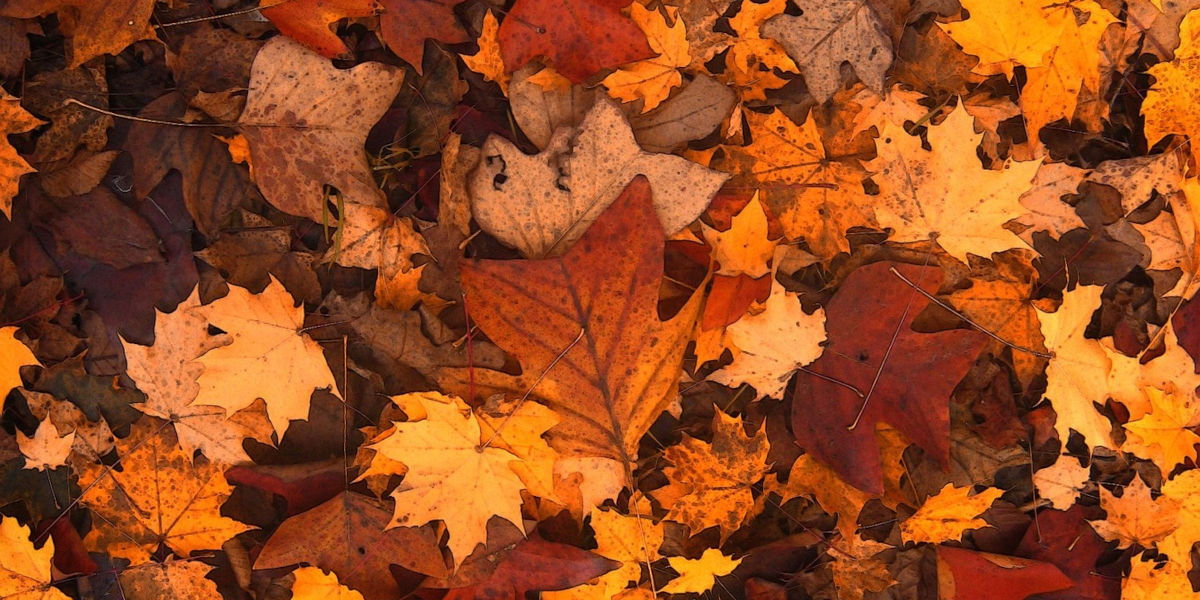As August gives way to September and the dog days of summer begin to fade, we notice a magical transformation. Green landscapes turn into a stunning array of warm hues. Forests and parks become a painter's palette of oranges, reds, yellows, and browns. Certainly, these fiery displays are incredibly beautiful, but have you ever wondered: why do leaves change color in fall? Let's dive into the science behind the captivating colors of autumn leaves.
Why Do Leaves Change Color in Fall: The Basics
Leaves don't actually change color. Instead, the green color we commonly associate with leaves disappears, revealing underlying colors. Chlorophyll, the pigment responsible for the green color of leaves, and an essential component of photosynthesis, decreases as the days get shorter and the temperature cools. This process leaves room for the "hidden" pigments to express themselves, but before we get deeper into that, let's start by understanding photosynthesis.
Photosynthesis is the process through which leaves convert sunlight into chemical energy. In the presence of sunlight, water, and CO2, chlorophyll helps to manufacture food, which aids growth and development. Green chlorophyll is excellent at absorbing sunlight, but all that sun exposure breaks the pigment down. In warmer, longer days, leaves replenish chlorophyll at a faster rate than it disintegrates. But come fall—with its shorter days and less intense sunlight—replenishment slows down, and the relentless breakdown eventually wins out.
Revealing the Autumn Colors: More Than Just Aesthetic
With the disappearance of chlorophyll, other pigments hidden within the leaves are unmasked. These include carotenoids, which are responsible for the yellow and orange hues, and anthocyanins, which account for the reds and purples. While they remain in the leaf throughout the year, during the spring and summer, their colors are masked by the overpowering green of the chlorophyll.
Carotenoids, always present but overpowered in spring and summer, finally get a chance to shine in fall. These stable compounds don’t break down easily, leading to the gorgeous golden yellows and brilliant oranges that hallmark autumn.
Anthocyanins, on the other hand, aren't typically present throughout the year. These pigments are produced in response to bright light and excess plant sugars within leaf cells. This enhanced production in autumn leads to the deep reds and purples that tint the landscape at this time of year.
The Science of Autumn Colors: Different Factors at Play
Each fall brings different colors. Various factors, including temperature, light, and water supply, have a significant impact on the duration and intensity of autumn colors. For instance, a succession of warm sunny days and cool, crisp (not freezing) nights leads to the most spectacular color displays. These ideal conditions culminate in an autumn filled with intense, vibrant hues.
Now that you have a better understanding of why leaves change color in fall, you can fully appreciate the science of autumn colors. So, the next time you gaze in wonder at the fiery landscapes of autumn, remember there's more to this breathtaking spectacle than meets the eye — it's a fascinating blend of sunlight, chemistry, and the relentless rhythms of nature.
As the opulent summer sun starts to fade, autumn beautifully comes into play with its cooler temperatures and dazzling display of colors. But have you ever stopped to wonder why the leaves change color during this particular season?
Well, it's all down to a fascinating mix of sunlight, weather conditions, and the biology of the tree itself. These factors combine in a glorious, natural alchemy that paints captivating hues onto our autumnal landscape. Without further ado, let's delve deeper into autumn's colorful secret.
The Science of Color Change
During the warm seasons, green is the dominant color in leaves due to a pigment known as chlorophyll, which is vital for a process called photosynthesis. This process enables plants to convert sunlight into food—sugars stored in their cells, to be precise. Nevertheless, leaves also contain other pigments like carotenoids and anthocyanins, responsible for the yellow, orange, and red colors, respectively. These pigments, however, are typically overpowered by the much stronger chlorophyll.
But when autumn draws nearer, things start to change. The days get shorter and there is less sunlight, leading to a reduction of chlorophyll. As chlorophyll fades, the veiled colors of carotenoids and anthocyanins—those radiant yellows, oranges, and reds—finally get their chance to shine.
Precisely when this color shift happens and how vibrant the colors will be depends on the weather conditions. Plenty of sunny days and crisp, not freezing, nights provide the best conditions for the most stunning autumnal display.
Varieties of Autumn Colors Across Different Trees
Not all trees were made equal, and their variety contributes to the wealth of autumn scenery. Some trees like poplars and gingkoes display only dazzling yellows, while others like dogwoods and some maple species gift us a riot of reds. Still, we have a horde of oaks that produce leaves in a rainbow of brown, rust hues, and dark reds.
Certain species of trees like birch, walnut, and hickory produce only small amounts of anthocyanins, resulting in their leaves turning a golden yellow. Others, such as maple, sumac, and sourwood, are brimming with anthocyanins and turn a deep red.
Meanwhile, mixed species forests, like many of those found in North America, provide a breathtaking display of colors. These forests burst to life as the blend of various species range from golden yellow to vibrant orange and fiery red, creating an electrifying palette of autumnal hues.
In Conclusion...
With every passing year, Autumn's spectacle never ceases to astound us. It’s a yearly reminder of nature's awe-inspiring cycle and its immaculate beauty. So, the next time you marvel at the autumn color palette, remember the intriguing science and nature's magic behind it.




